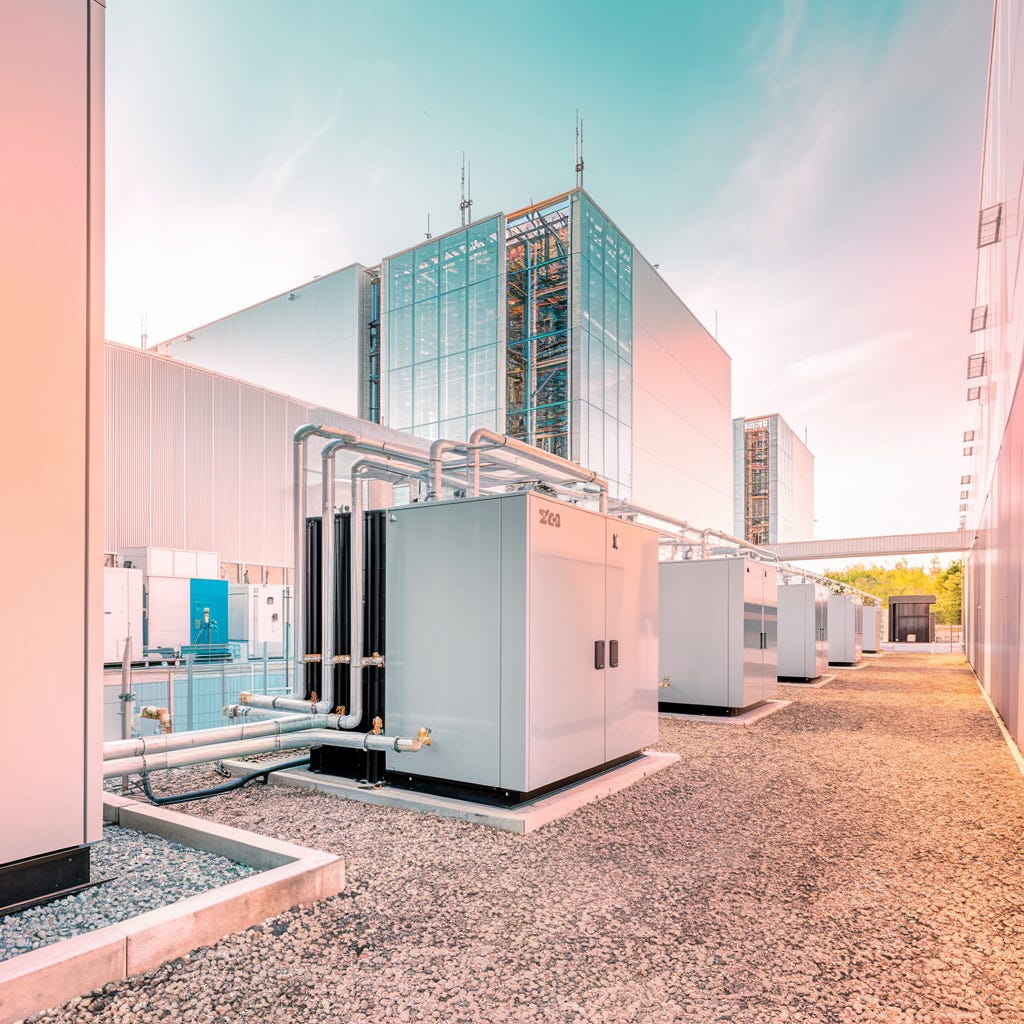The Hydrogen Bet: A Cleaner Backup Blueprint for the AI-Powered Data Center
Hydrogen fuel cells are moving from fringe tech to frontline backup for AI data centers. Cleaner, scalable, and real. The shift starts now.
Welcome to Global Data Center Hub. Join 1400+ investors, operators, and innovators reading to stay ahead of the latest trends in the data center sector in developed and emerging markets globally.
We’re approaching a critical decision point for data center infrastructure.
On one path: diesel generators reliable, but carbon-intensive and increasingly untenable.
On the other: hydrogen fuel cells modular, emission-free, and gaining traction fast.
Until now, hydrogen has lived on the fringe of data center conversations. But as AI demand surges, grid constraints worsen, and sustainability mandates intensify, hydrogen fuel cells are reemerging not as hype, but as a viable, system-ready alternative.
What’s Changing and Why It Matters Now
AI workloads are reshaping the economics of uptime.
An outage today is no longer a temporary inconvenience. It’s a multimillion-dollar loss in compute output, inference capability, and business continuity.
Meanwhile, grid interconnection timelines have stretched from months to years in key markets like Northern Virginia, Singapore, and Frankfurt.
Backup power is no longer a compliance line item. It’s core infrastructure strategy.
And diesel is facing mounting headwinds:
Carbon emissions clash with corporate sustainability goals
Local regulations are tightening around diesel permitting and use
Diesel generators are ill-suited to the fast-cycling demands of modern workloads
Hydrogen offers a third path and early adopters are paying attention.
How Hydrogen Fuel Cells Work
Hydrogen fuel cells generate electricity through an electrochemical reaction between hydrogen and oxygen. There’s no combustion. The only byproducts are heat and water vapor.
At the center of this approach is PEM (Proton Exchange Membrane) fuel cell technology valued for its rapid startup, load-following capability, and high reliability. It’s been used in aerospace and automotive sectors for decades. The new shift is its application in stationary backup systems for mission-critical facilities.
Key advantages:
Zero on-site emissions
Comparable uptime performance to diesel
Modular architecture from kilowatt to megawatt scale
Quiet, low-maintenance operation
Historically, integration was complex. But new plug-and-play systems now bundle the full “balance of plant” from hydrogen input to AC output cooling systems, inverters, filtration, and power conversion all in one containerized unit.
From Concept to Deployment: The Washington Hospital Case Study
A rural hospital in Washington State recently installed a permanent 100 kW hydrogen fuel cell system to serve as part of its microgrid. This wasn’t a test or a showcase it was a fully integrated solution powering real operations.
Developed in collaboration with major industrial partners, the system included:
Two 100 kW PEM fuel cell engines
A full suite of balance-of-plant components
Inverters converting DC output into AC electricity
Even more important: the hydrogen supply is local and green. It’s produced through hydro-powered electrolysis from nearby dams creating a closed-loop, zero-carbon energy cycle.
This project isn’t just about emissions reduction. It’s about energy sovereignty and resiliency. In a disaster, this hospital becomes a city hub emergency response, communications, care. The stakes are high, and the infrastructure is critical.
The same principles apply to data centers.
The Scalability Challenge
Scaling this to a hyperscale campus is non-trivial.
But it’s not theoretical. Vendors are developing megawatt-class systems that can be stacked, paralleled, and managed just like diesel-based backup today.
Key trends making this possible:
Modular fuel cell “engines” that can be scaled like generator blocks
Turnkey containerized systems for faster deployment
On-site hydrogen generation and storage capabilities in development
Policy support, including US hydrogen hub initiatives
As with most infrastructure transitions, the biggest shift isn’t technical it’s systemic. Diesel is embedded in procurement cycles, engineering specs, and operational routines. Hydrogen will need to prove parity then exceed it on sustainability, scalability, and long-term cost.
That process is underway.
What’s Holding It Back
Hydrogen fuel cells are not a universal fix, and key bottlenecks remain:
Hydrogen supply and distribution infrastructure is still developing
Green hydrogen remains more expensive than diesel
Safety regulations and permitting vary by jurisdiction
Integration with existing electrical and control systems requires new standards
But this is where early adopters thrive.
The constraints today mirror the early days of solar, batteries, and even diesel itself. The opportunity lies not just in adopting the tech, but in building the ecosystem to support it.
Where the Market Is Going
Hydrogen isn’t going to replace diesel tomorrow. But the long arc is clear.
In the next 3–5 years:
Expect megawatt-scale pilots at AI campuses in grid-constrained regions. These will demonstrate full parity performance with diesel gen sets minus the emissions.
In the next 5–10 years:
On-site hydrogen production will begin to emerge, especially in locations with renewable overcapacity. Policy tailwinds and capital markets will make green hydrogen more cost-competitive.
In the next 10–15 years:
We may see outright diesel bans in Tier 1 cities, and hydrogen-based systems may become the default backup standard for clean AI infrastructure.
Final Thought
Backup power is no longer a back-office concern.
In the AI era, it’s foundational. It determines who can scale compute, meet uptime guarantees, and comply with rapidly evolving sustainability expectations.
Hydrogen fuel cells offer a path to resilience without compromise.
And the smartest operators are already charting that path.

